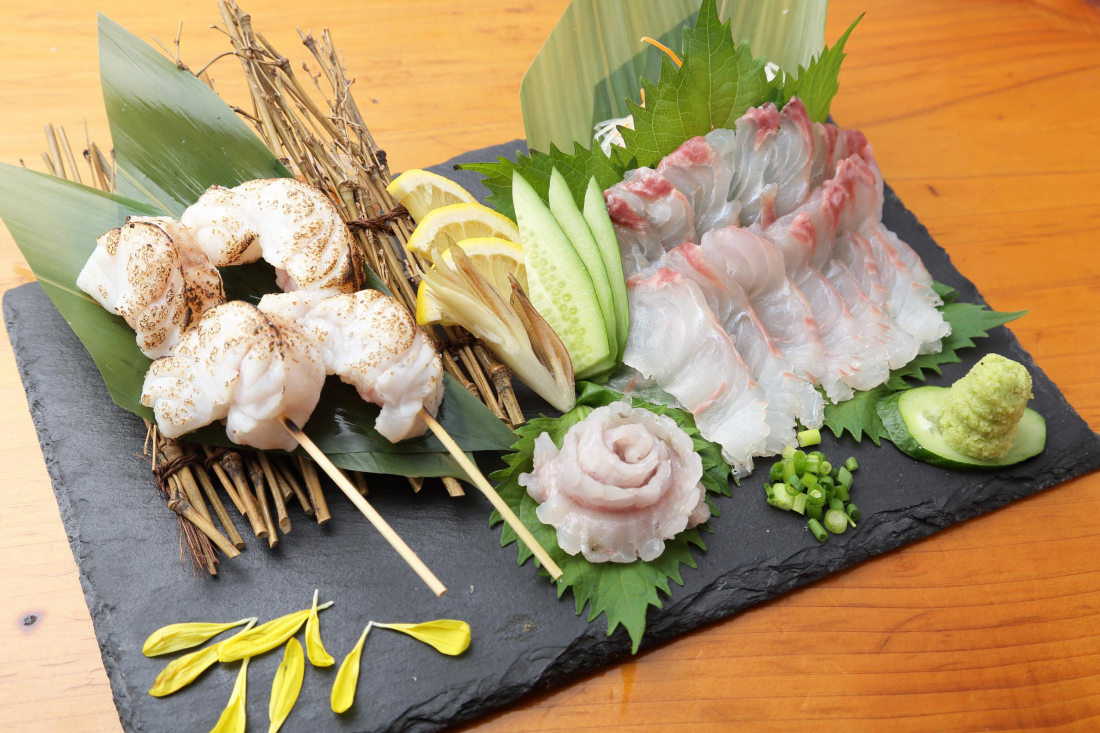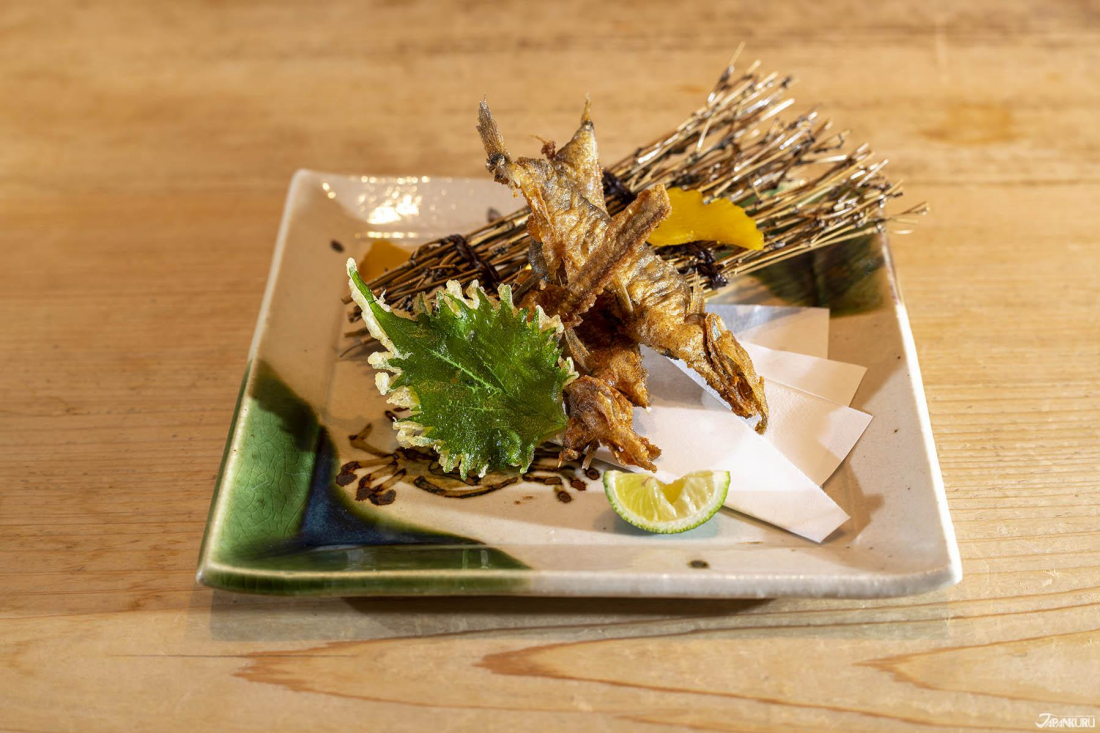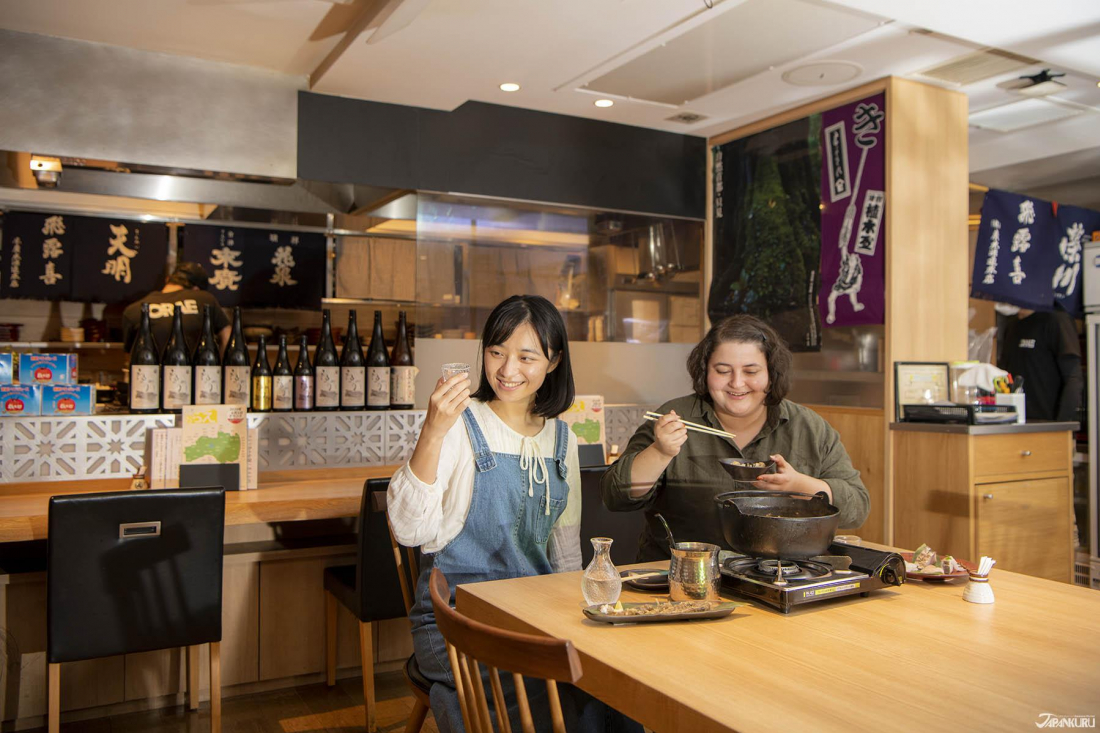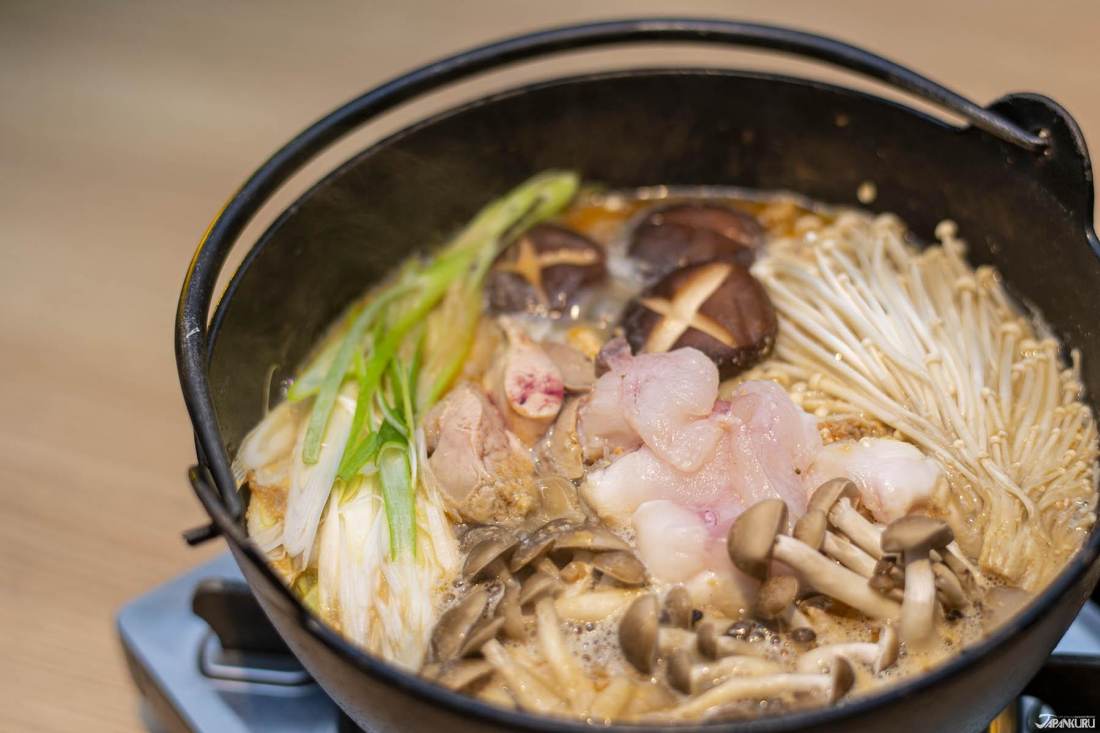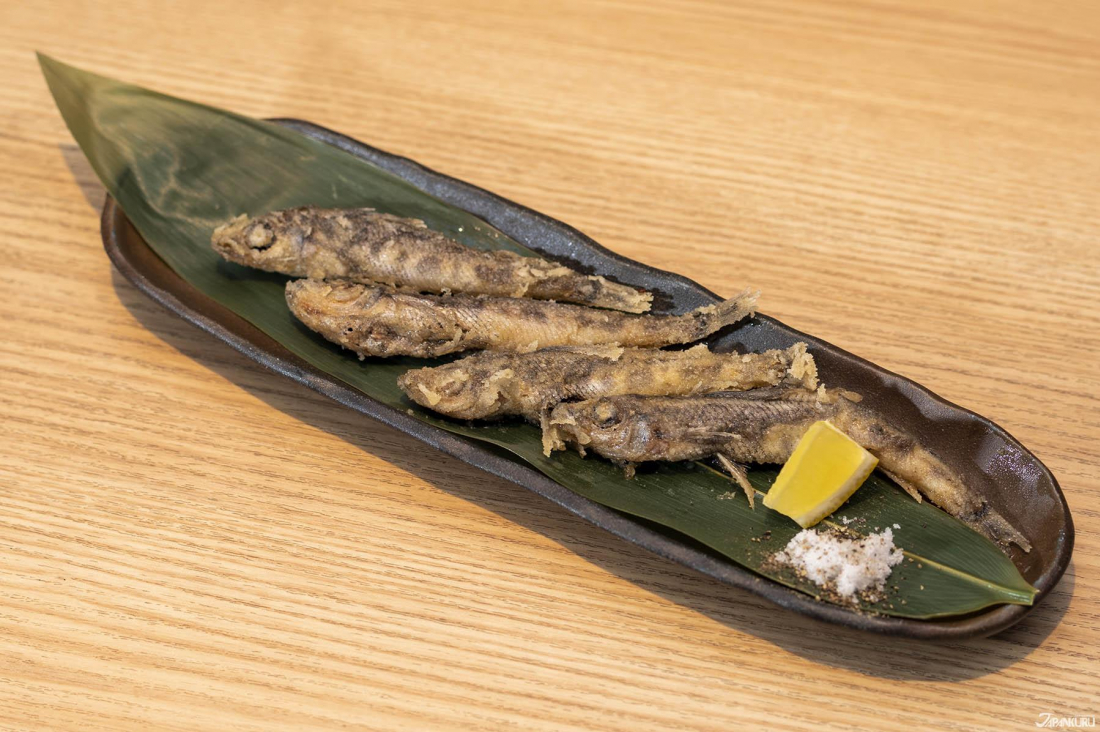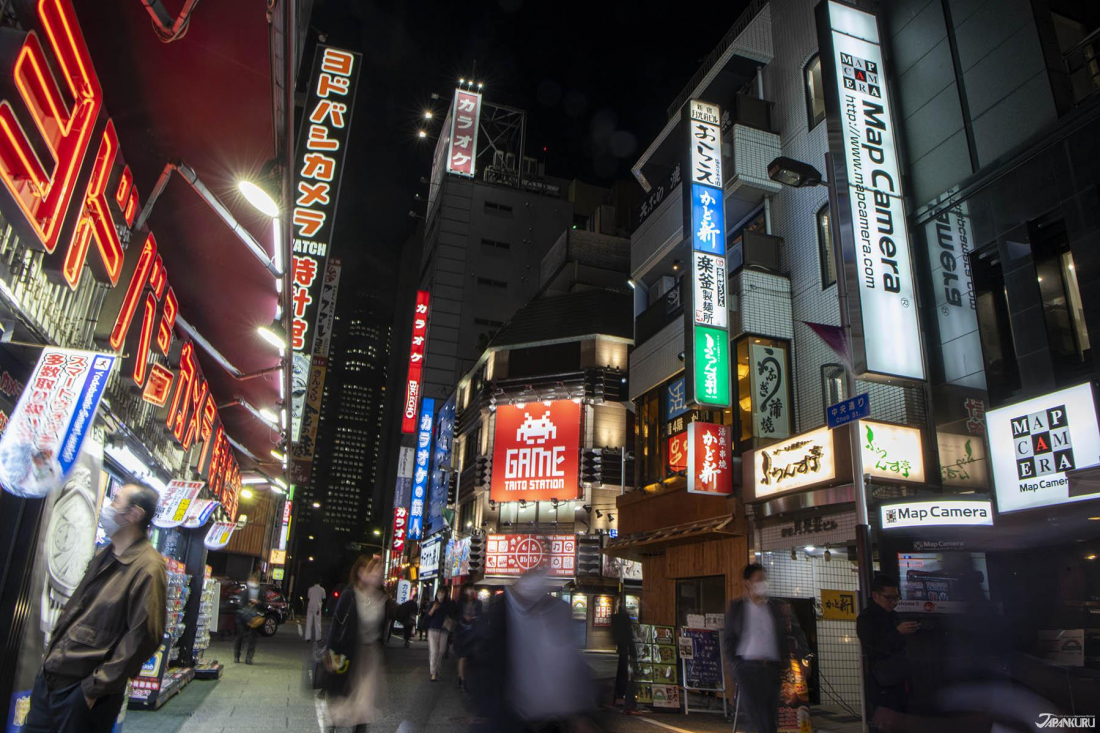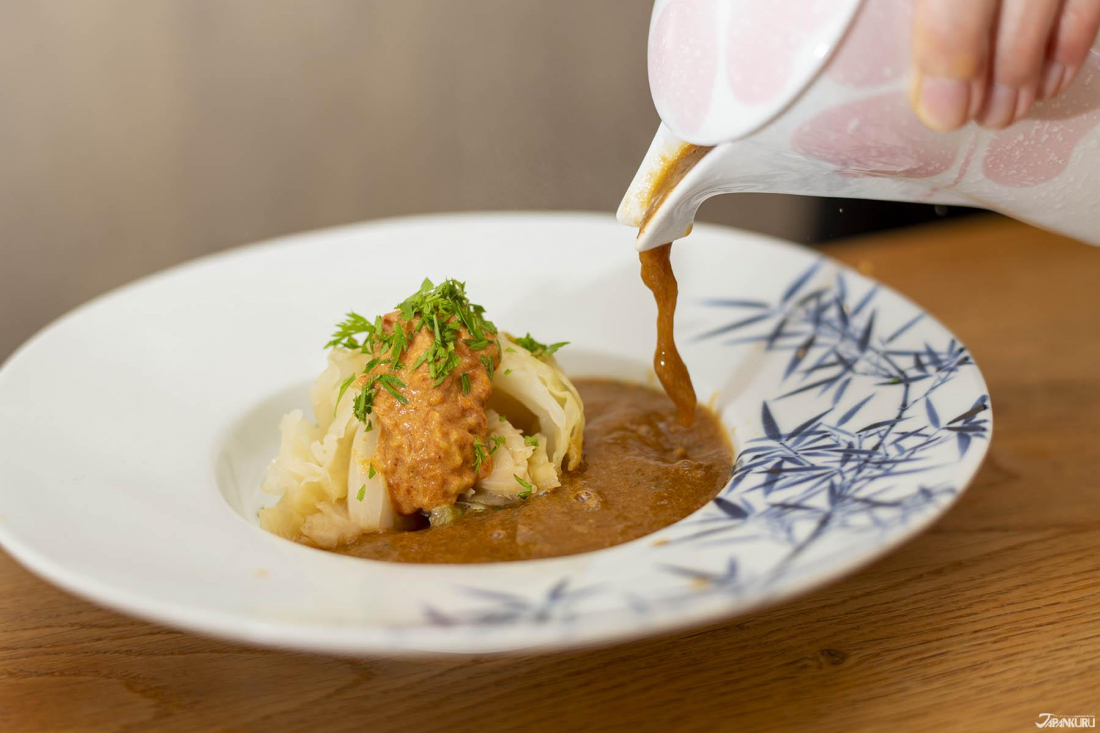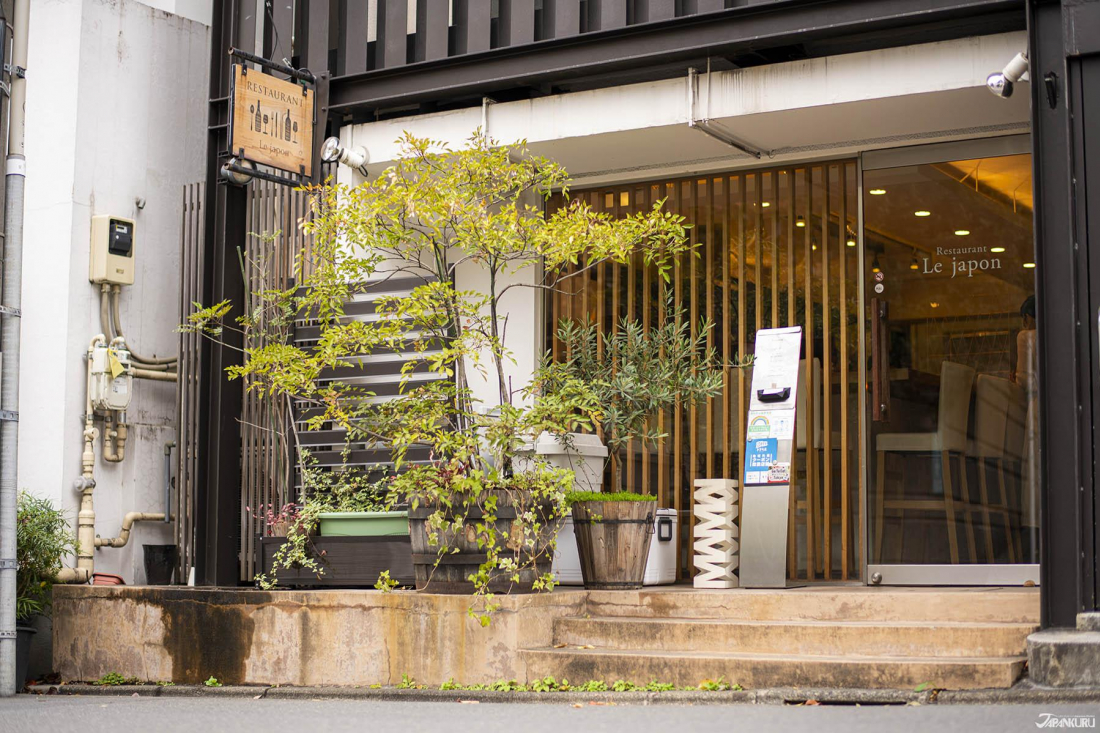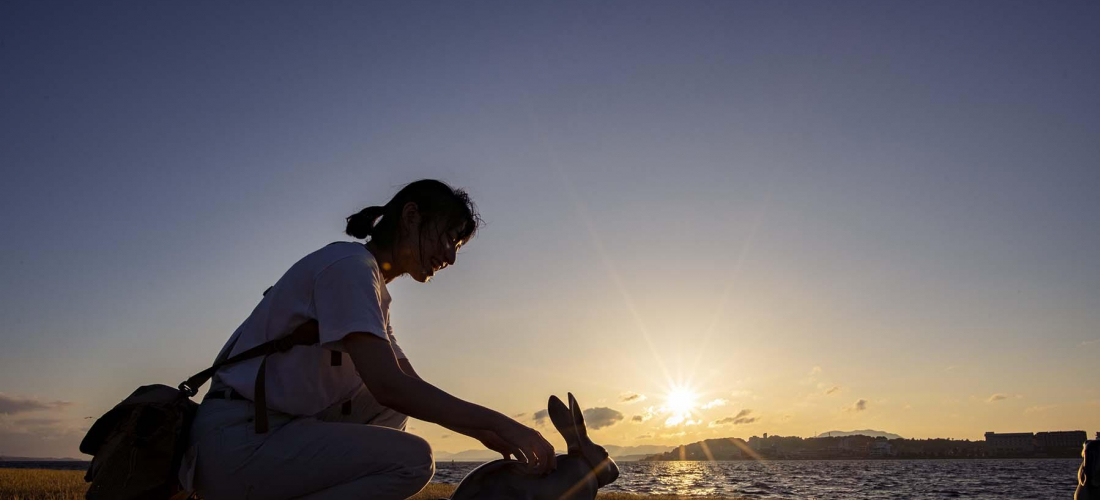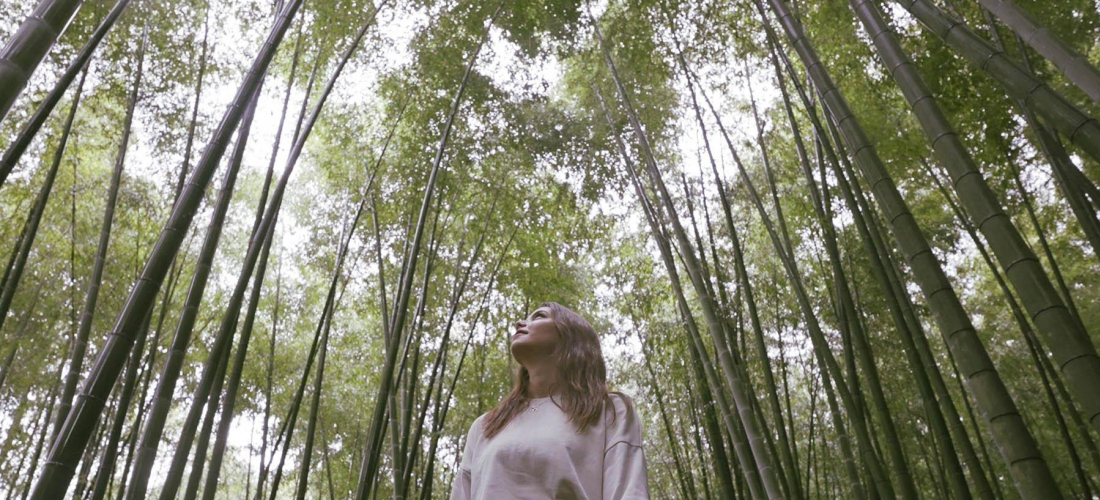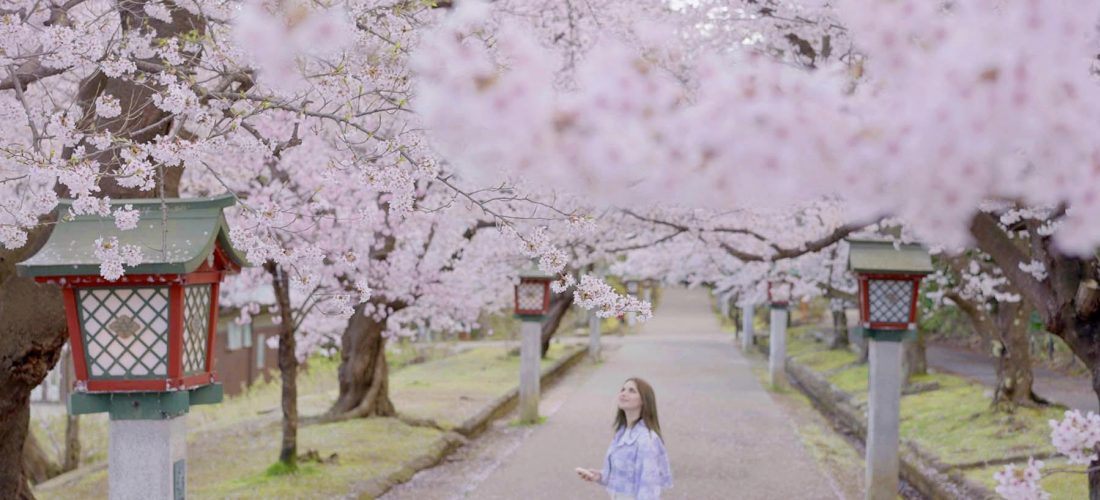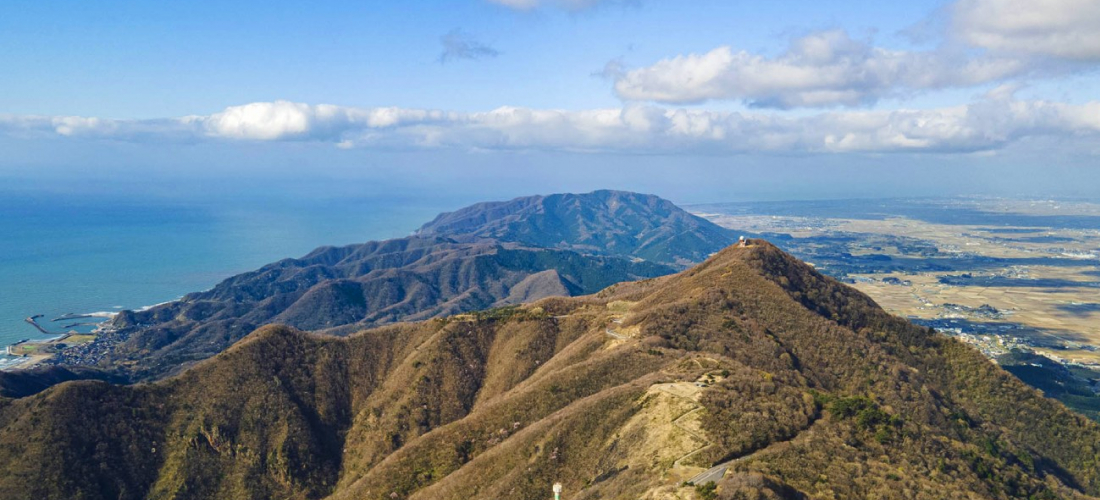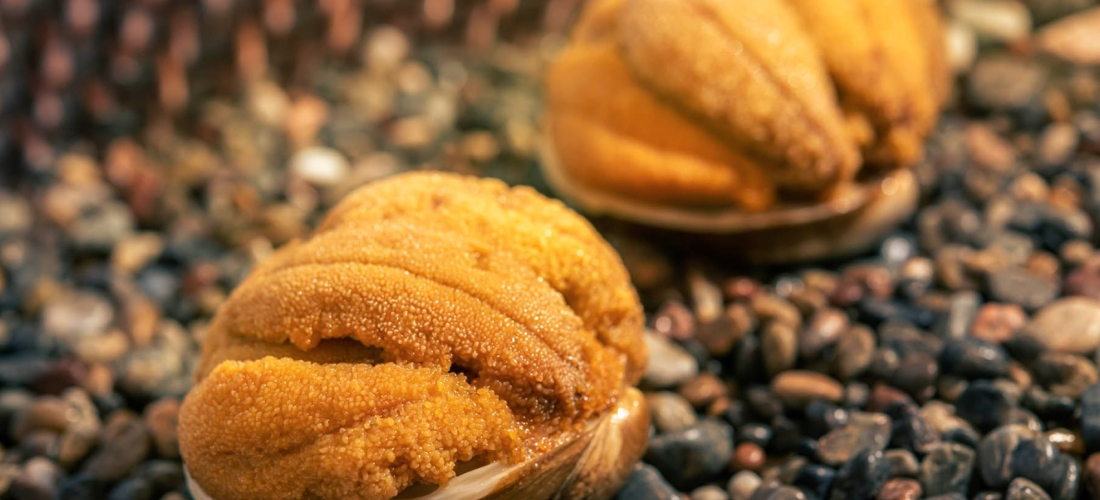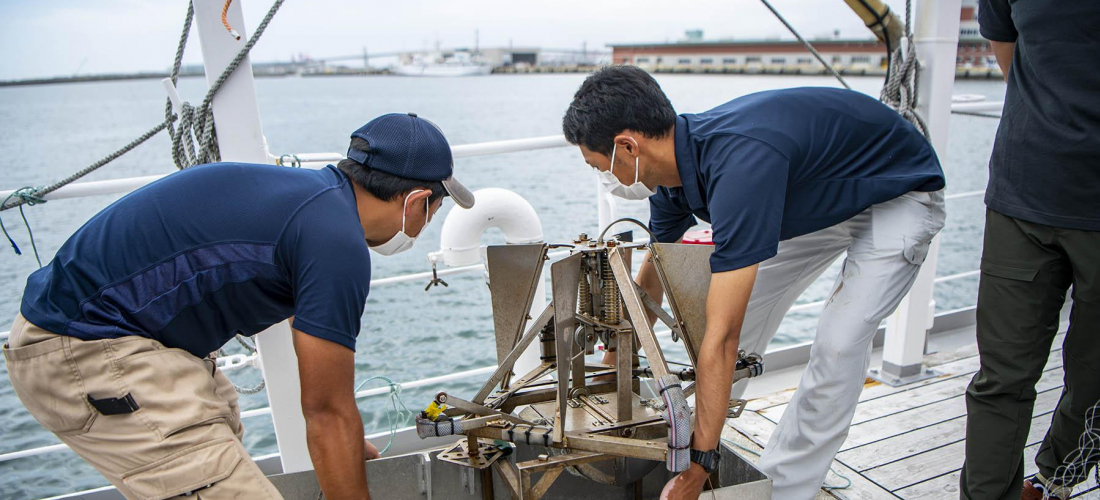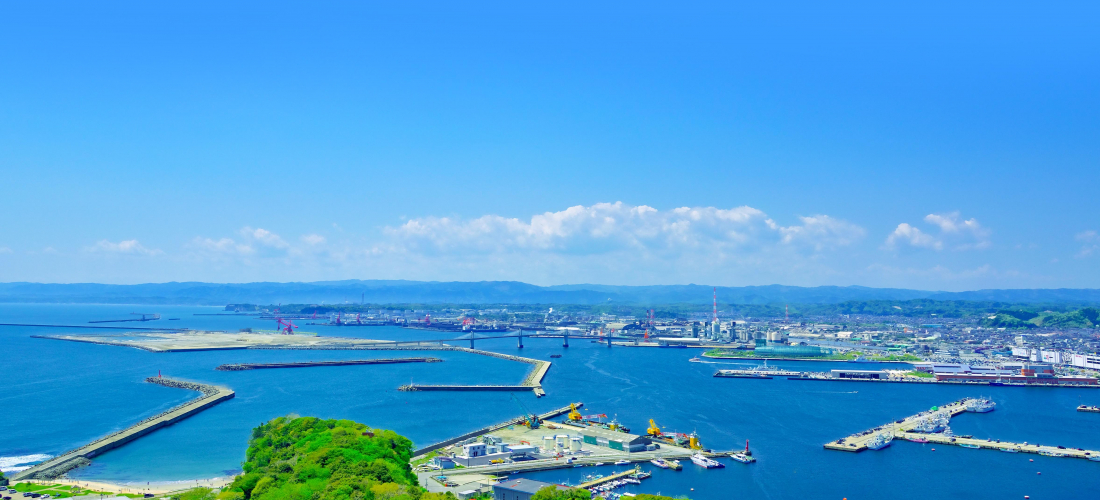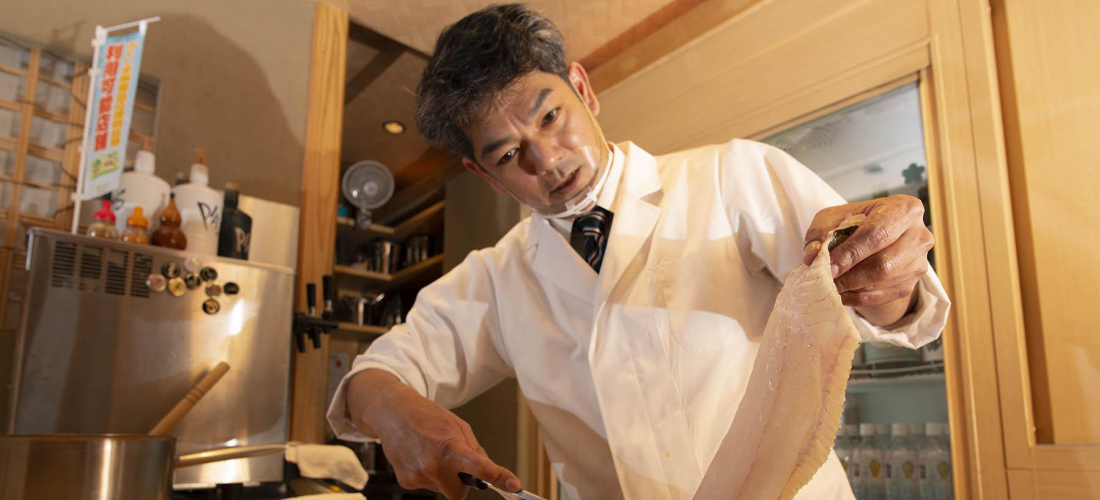
CONTENTS
Ces restaurants de Tokyo offrent aux convives la possibilité d’essayer les célèbres poissons et fruits de mer Joban-mono de Fukushima, sans quitter la grande ville.
Gouter au Joban-mono à Tokyo
L'image de Fukushima a été bouleversée il y a dix ans et a encore plus évolué au cours des années qui ont suivi. Fukushima était autrefois connue comme le paradis des fruits de mer, puis est devenue une région ravagée par une catastrophe, mais a plus récemment gagné la réputation d'une préfecture qui travaille à la reconstruction. Au cours des derniers mois, nous avons utilisé la série Joban-mono ici à Japankuru pour examiner comment les choses ont évolué à Fukushima, des zones de pêche bien-aimées de la mer de Shiome aux tests minutieux d'échantillons d'eau de mer et de fruits de mer, et autres projets durables. En cours de route, cependant, nous avons découvert plus que de la science dure ― nous avons également compris pourquoi le Joban-mono est si savoureux, et nous avons rencontré des chefs incroyables utilisant avec brio les ressources locales qui ont fait de Fukushima un nom populaire dans les marchés aux poissons depuis tant d'années.
Cependant, tout le monde qui voyage au Japon n'a pas la chance de visiter Fukushima et d'essayer le poisson et les fruits de mer Joban-mono, et passer à côté de ces spécialités japonaises pour des raisons de commodité serait dommage. Heureusement, ce n'est pas si difficile de trouver du Joban-mono à Tokyo, si vous savez où chercher! Quelques chefs talentueux ont apporté une cuisine fraîche de Joban-mono dans la grande ville, permettant aux habitants de Tokyo et aux voyageurs de goûter à ce qui rend le Joban-mono si génial, sans se rendre jusqu'à Fukushima. Si vous souhaitez goûter vous-même au Joban-mono, voici trois restaurants à essayer en premier.
Piasis Shinbashi (PIASIS 新橋店)
Le nom Piasis est un mixe des mots utopie et oasis, et le restaurant lui-même ressemble à une évasion tranquille des rues animées de Shinbashi. En fait, un seul coup d'œil au menu vous fera vous sentir moins comme si vous étiez assis au milieu de Tokyo animée, et plus comme si vous étiez dans un izakaya chic dans la paisible ville de Fukushima. Des légumes et du poisson utilisés dans chaque plat à l'excellente sélection de saké nihonshu, et même au whisky, tout est de Fukushima.
Il s'avère que le chef cuisinier de Piasis est originaire de la préfecture de Kagoshima, loin de la préfecture nord de Fukushima ― mais il est tombé amoureux de Fukushima après avoir été introduit dans la région par un ami à l'université. Quand il est arrivé à Piasis, il a absolument insisté pour apporter les merveilleux ingrédients qu'il avait trouvés à Fukushima, et de donner à plus de gens une chance de les essayer.
Lorsque l'équipe de Japankuru a visité le restaurant, nous avons pu voir le chef découper et préparer habilement une lotte entière, passant rapidement d'un poisson qui occupait la majeure partie du comptoir à des tranches de sashimi soignées et délicates, prêtes à être mangées. Ce n'était qu'un des poissons qui avaient été livrés frais des eaux au large de Fukushima le matin même! Ne voulant pas perdre une seule goutte de saveur, ils ont mentionné que des morceaux de lotte qui ne sont pas prêts à être coupés en sashimi sont utilisés pour créer des bouillons savoureux qui ajoutent de la profondeur à d'autres plats.
rn
rnVous vous sentez prêt.e à y gouter? Ils servent une variété de condiments avec le sashimi de hirame chez Piasis. D'une part, la sauce soja Fukushima Yamabun est facilement disponible, mais vous pouvez également essayer d'aromatiser votre sashimi avec du wasabi, des feuilles de shiso (également appelées périlla), des éclats de citrouille kabocha, ou même des microgreens "benitade" (紅 た で).
En plus des ingrédients frais de Joban-mono chez Piasis, c'est aussi un bon endroit pour essayer les plats traditionnels de Fukushima, préparés avec expertise. La marmite de lotte est un standard de Fukushima, et chez Piasis, les tranches de poisson et de légumes viennent dans de petits plats remplis d'un bouillon fait en faisant bouillir du miso salé avec des os et du foie de lotte, ce qui donne une soupe remplie d'umami. Votre Mehikari Karaage, greeneye frit, peut même être servi sur un plat préparé selon les méthodes traditionnelles de céramique Somayaki (ou Soma Ware).
Piasis Shinbashi (PIASIS 新橋店)
3-16-22 Shinbashi, Minato-ku, Tokyo
17:30 – 22:00
Official Website (jp)
Orae Fukushima Furusatoryori (福島ふるさと料理 おらえ)
Notre prochain arrêt est dans le quartier de Shinjuku, un endroit approprié pour le restaurant Orae, plus décontracté, et populaire auprès des groupes de jeunes. L'atmosphère lumineuse et animée est une toile de fond joyeuse pour de délicieux repas rappelant la bonne cuisine maison, et ils offrent une variété de choix, des spécialités de Fukushima aux plats de pâtes intéressants et aux plats savoureux au bar. L'esprit de Fukushima ne manquent certainement pas non plus grâce aux murs décorés de bannières de Fukushima et d'affiches touristiques promotionnelles. Ce petit morceau de Fukushima à Shinjuku en fait une halte de dîner amusante au milieu de la ville.
Ce chaudron épais est une autre version du pot au feu de lotte de Fukushima, mais il est facile de voir qu'Orae fait les choses un peu différemment! Le grand pot en fer arrive à table débordant de légumes frais et de morceaux de lotte, et après que le feu est allumé dans le petit brûleur en dessous, le bouillon bouillonnant laisse échapper un arôme délicieusement savoureux de bonnes choses à venir. Lorsque la soupe est enfin servie, la recette maison est délicieusement riche et tout le monde peut déguster une bouchée de lotte tendre.
or sole, maquereau espagnol, sabre, loup de mer
N'oubliez pas d'essayer le sashimi et l'eperlan frit chez Orae aussi! Alors que le poisson frit est au menu permanent, le menu de sashimi change chaque jour, de sorte que le restaurant peut offrir le Joban-mono le plus frais et le plus délicieux des ports de Fukushima. Demandez à un serveur pour savoir exactement ce qui est disponible!
Orae Fukushima Furusatoryori (福島ふるさと料理 おらえ)
1-12-6 Nishishinjuku, Shinjuku-ku, Tokyo
Dejeuner 11:30 – 16:00/Diner 16:00 – 23:00
Official Website (jp)
Le Japon (ル・ジャポン)
Vous trouverez "Le Japon" dans une rue en pente du quartier très branché de Meguro, une façade chic séparant le monde de l'intérieur confortablement minimaliste contenant une poignée de sièges de comptoir. Contrairement à Piasis et Orae, "Le Japon" n'est pas toujours au thème du Joban-mono, mais propose plutôt des plats fusion qui combinent des techniques de cuisine française avec des ingrédients et des saveurs japonais de saison. Heureusement, l'équipe de Japankuru était très enthousiaste de constater que "Le Japon" proposait un menu à prix fixe de plats Joban-mono à la fin de l'automne dernier, et nous avons sauté sur l'occasion de voir quelle magie allait venir de combiner la cuisine française et les ingrédients de Fukushima.
Nous pouvons remercier le chef cuisinier de "Le Japon", lui-même originaire de Fukushima, pour les recettes uniques qui s'inspirent clairement des plats traditionnels de Fukushima, avec une touche française. Le sashimi simple est peut-être un aliment de base de la cuisine de Fukushima, mais au Japon, les tranches de maquereau Joban-mono, fraîches des eaux au large de Fukushima, font partie d'une élégante salade, combinée avec des légumes verts, du crabe à poils et une vinaigrette brillante et légèrement acide.
Le Joban-mono à prix fixe proposait un certain nombre de plats, mais celui-ci pourrait vous rappeler un peu certains des plats plus traditionnels de Joban-mono que nous avons essayés ailleurs à Tokyo. Cette soupe de lotte, cependant, n'est pas un plat japonais traditionnel. Pour commencer ― la soupe commence par une base de mirepoix française, un mélange d'oignons, de céleri et de carottes, contrairement aux saveurs habituellement au cœur de la cuisine japonaise. Une lotte entière est ajoutée à la soupe et mijotée jusqu'à ce que le collagène du poisson fasse partie du bouillon, ajoutant richesse et texture. Bien sûr, ce ne serait pas de la cuisine française sans un peu de vin! Alors que les soupes de poisson françaises nécessitent parfois l'ajout d'une liqueur d'anis plus forte pour équilibrer les saveurs de poisson, le poisson Joban-mono dans ce plat est si frais qu'il n'y a rien à cacher ー alors le chef utilise un vin simple à la place. Lorsque la bouillabaisse copieuse est enfin réunie, elle est servie avec du chou Koriyama (un autre ingrédient de Fukushima) et garnie d'un aïoli aux tomates pour mettre en valeur les saveurs. "Le Japon " sait clairement prendre une savoureuse recette de Joban-mono et y ajouter un peu de style!
Le Japon (ル・ジャポン)
2-10-11 Aobadai, Meguro-ku, Tokyo
Déjeuner 12:00 – 13:00/Diner 17:00 – 22:00
Official Website (jp)
Au cours des derniers mois, nous espérons que vous avez aimé suivre l'équipe de Japankuru dans notre voyage à la découverte de Joban-mono, et le travail acharné qui consiste à mettre ces délices de fruits de mer à table. Des bateaux de pêche qui quittent le port avant l'aube aux chercheurs évaluant chaque jour la sécurité de l'eau et des fruits de mer, pour de nombreux habitants de Fukushima, ce travail est un travail d'amour.
Heureusement, l'effort porte enfin ses fruits! Joban-mono est peut-être une spécialité de Fukushima, mais même à Tokyo, il n'est pas si difficile de trouver du Joban-mono ces jours-ci, dans le cadre d'un repas décontracté, d'un dîner de qualité ou même avec une touche française. Il n'y a plus qu'à prendre une bouchée de ce Joban-mono, et voir de quoi il s'agit!
Pour plus d'informations et de news du Japon, consultez Japankuru.com et n'oubliez pas de nous suivre sur twitter, instagram, and facebook!
Details
NAME:Joban-mono in Tokyo
PROFILE
Follow us @Japankuru on Facebook, Instagram, and Twitter!
COMMENT
FEATURED MEDIA
VIEW MORE
・The new Tokyo flagship for Volcom Japan is a center for all things skateboarding, street fashion, art, and culture, all in the heart of Shibuya! ・Volcom日本旗艦店東京澀谷登場 本格派滑板街頭潮流藝文新據點 #Volcom #japankuru #shibuya #日本購物 #日本潮流 #日本街頭時尚 #澀谷 #東京購物 #東京購物推薦 #東京潮店 #澀谷潮店 #滑板 #雪板 #衝浪 #볼컴 #시부야

Which snacks make the best Japanese souvenirs?~ Jaga Pirika ~ 일본과자 선물 뭐하지?~자가피리카 편~ #pr #calbee #jagapokkuru #japanesesnacks #japanesefood #japanesesouvenir #japantravel #japantrip #naritaairport #hokkaido #나리타국제공항 #일본여행선물 #흔하지않은기념품 #일본쇼핑리스트 #일본과자추천 #고구마과자 #일본간식추천 #일본면세점쇼핑 #개별포장 #일본감자칩 #도쿄나리타공항면세점 #현지인추천 #일본여행 #일본기념품리스트 #자가포쿠루 #자가피리카

Asakusa's Sanja Matsuri, one of the biggest festivals in all of Tokyo, is almost here! Make sure you check out the festival route so you don't miss all the festivities this May. #asakusa #sanjafestival #sanjamatsuri #asakusashrine #sensoji #sensojitemple #japanesefestival #shintoshrine #japaneseculture #tokyo #tokyotrip #tokyotravel #asakusasightseeing #matsuri #japantrip #japantravel #springinjapan #tokyotravel #japankuru #산자마츠리 #아사쿠사 #일본마츠리 #일본여행 #일본5월

Odaiba's DiverCity Tokyo Plaza is home to the famous real-size 20m-tall Unicorn Gundam, and the popular shopping center has even more Gundam on the inside! Check out the Gundam Base Tokyo on the 7th floor for shelves upon shelves of Gunpla, and the Gundam Base Tokyo Annex on the 2nd floor for cool anime merchandise. Both shops have tons of limited-edition items! #pr #odaiba #tokyo #tokyotrip #japantrip #japantravel #PR #divercity #divercitytokyoplaza #tokyoshopping #gundam #unicorngundam #gundambasetokyo #anime #otaku #gunpla #japankuru #오다이바 #다이바시티도쿄 #오다이바건담 #건담 #일본건담 #건프라 #건담베이스도쿄

Evangelion, in miniature!? Tokyo's SMALL WORLDS Miniature Museum is actually a must-see for anime lovers, thanks to the tiny Evangelion Hangar and Tokyo-III... plus a whole universe of other scenes both real and fictional. #smallworlds #smallworldstokyo #tokyotrip #tokyotravel #evangelion #eva #anime #miniature #miniatures #animefigure #japantrip #japantravel #에반게리온 #스몰월드 #에반겔리온 #スモールワールズ #오다이바 #아리아케

Have you sat down for a snack at Sumida Aquarium yet? This aquarium next to Tokyo Skytree is known for its penguins and garden eels, but we can't get enough of their cute snacks! There are lots of good seats around the aquarium, too, so it almost feels like one big cafe. 🐧 • Find out more at Japankuru.com! (Link in bio.) • #japankuru #sumidaaquarium #skytree #tokyoskytree #solamachi #sumida #tokyo #tokyotrip #tokyotravel #aquarium #japanesesweets #themecafe #すみだ水族館 #Japan #日本 #일본 #Japon #ญี่ปุ่น #Japão #япония #japantravel #日本旅行 #日本旅遊 #japan_of_insta #japantrip #traveljapan #japan🇯🇵 #igerstokyo #explorejapan

For anime fans, the Evangelion areas at Small Worlds Miniature Museum are a must see! The tiny miniature people in the Evangelion Hangar look like ants beneath the moving Unit-01, Unit-00, and Unit-02! And over in Tokyo-III, characters like Shinji, Rei, and Katsuragi live life on a miniature scale. #odaiba #tokyo #tokyotrip #japantrip #japantravel #ariake #smallworlds #miniaturemuseum #smallworldstokyo #tokyotravel #evangelion #eva #anime #miniature #miniatures #animefigure #japankuru #스몰월드 #에반게리온 #오다이바 #오다이바관광 #오다이바스몰월드 #미니어쳐

